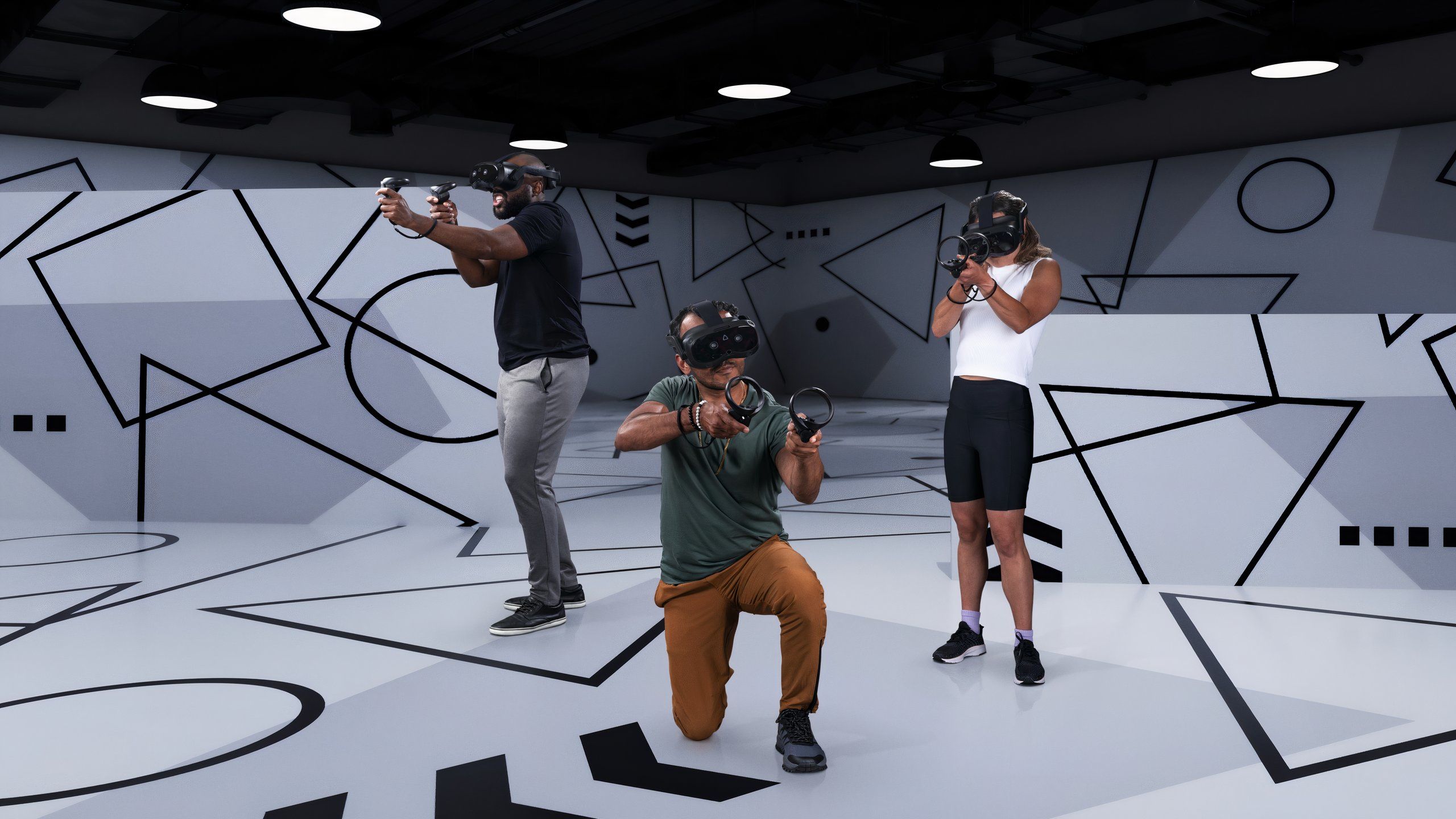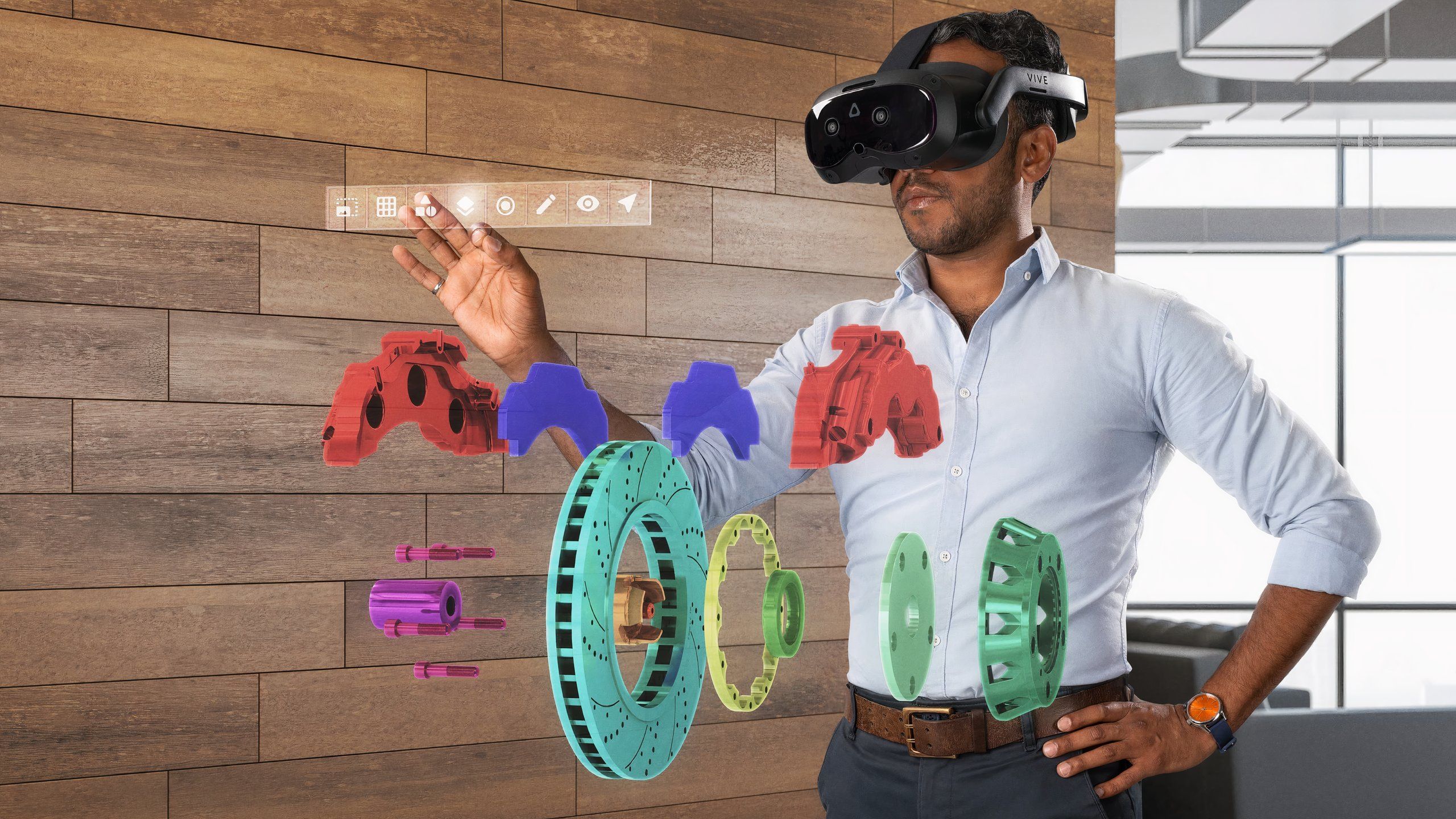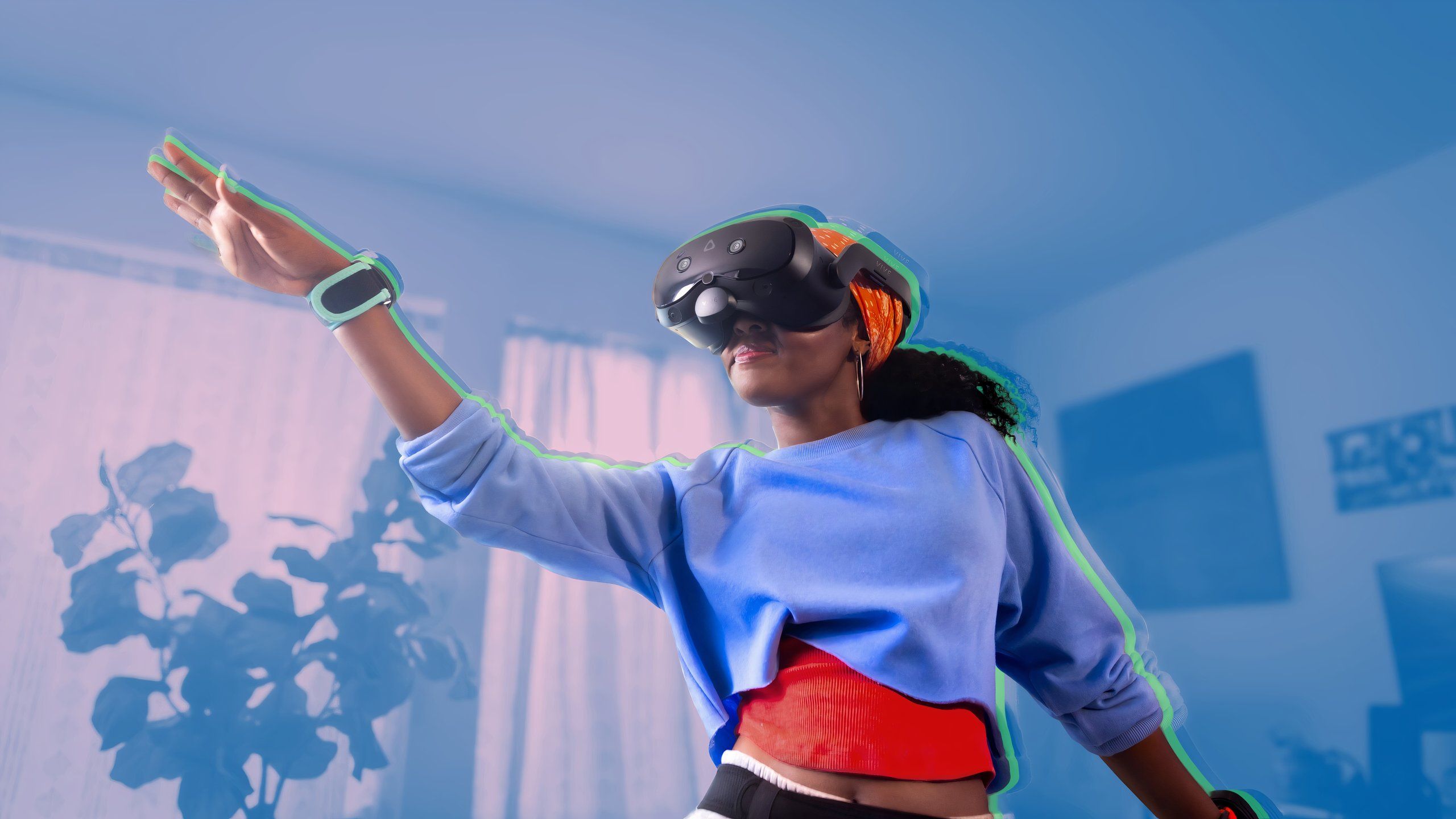Key Takeaways
- The HTC Vive Focus Vision combines premium features, Auto-IPD adjustments, and a hot-swappable battery for a comfortable and high-quality VR experience.
- Priced at $999, the Focus Vision straddles professional and gaming features, providing an alternative to Apple and Meta headsets.
- HTC’s approach focuses on enhancing user-experience over pushing the “Metaverse,” a trend that needs to be more common.
The “Metaverse” might not have appeared as quickly as many of the company’s now pushing artificial intelligence expected, but that doesn’t mean virtual reality is dead. If there’s anything that’s proven true since Apple entered the space with the Vision Pro in February 2024, it’s that VR headsets still work best for gaming and professional training, with acting as a replacement for your laptop or smartphone a very distant third.
Getting out ahead of Meta’s rumored affordable headset announcement at Connect 2024, HTC is making a splash with a new headset of its own, the Vive Focus Vision, a premium XR (extended reality) device that straddles the premium features of the Vision Pro and gaming focused skills of the Meta Quest 3 and HTC’s past headsets to carve out a comfortable middle ground of its own.
It might not look flashy, but HTC seems like it’s created a VR headset primed to be the go-to choice for anyone interested in PC VR, and maybe, just maybe, the kind of device that knocks the space further away from pie-in-the-sky ideas like the Metaverse and towards what virtual reality headsets are already good at.
The Vive Focus Vision is collection of premium features in familiar body
The look of the Focus line, but for a cheaper price
HTC / Pocket-lint
If the Vive Focus Vision looks familiar, that’s not by mistake. HTC has deliberately tried to keep the headset similar to the Vive Focus 3 released in 2021. It works with the same accessories and trackers as HTC’s current lineup, and unlike the primarily business-oriented Focus 3, the Focus Vision should work just as well for an architect viewing CAD files as it does a gamer trying to hit a high score in Beat Saber.
That starts with the price. HTC sold the Focus 3 for $1,300 to start and an eye-gouging price compared to the then $299 Quest 2. The lightweight, mixed-reality focused Vive XR Elite came in at $1,099, undercutting the original price of the Quest Pro. The Vive Focus Vision will cost $999 at launch, which is not as radically low as the Quest 3, but is a pretty stark difference from the $3,500 Apple charges for the Vision Pro.
HTC’s headset is reserved, but comfortable
A must during extended gaming sessions
The Vive Focus Vision is an all-in-one, inside-out tracked headset that can function on its own or be connected to a PC via a feature HTC calls DisplayPort Mode for lossless streaming from your PC to the headset. This makes the Focus Vision the ideal headset to choose if you’re already invested in visually demanding PC VR games. They’ll look just that much better.
The headset itself is made from a mixture of an aluminum frame, black plastic exterior, and a comfortable, cushiony black leather face gasket and headrest, with a removable battery on the back of the headset acting as a counterbalance for the portion that covers your eyes and face in the front. The Vive Focus Vision features downward firing speakers so you can be immersed in spatial audio without needing headphones, and on the front of the headset, two color passthrough cameras for mixed reality experiences.
Internally, the Vive Focus Vision shares some similarities with the Focus 3. That includes a 2.88-inch LCD for each eye, offering 2,448 x 2,448 pixels per eye, and a 90Hz refresh rate out of the box that HTC plans to boost to 120Hz after a software update. Like the Quest 3, the headset is powered by a Qualcomm Snapdragon XR2, currently the cream of the crop for XR devices, alongside the Focus Visions’ 12GB of LPDDR5 memory, and 128GB of storage. Pair that with support for Wi-Fi 6E, a built-in depth sensor, and a battery life of up to 2 hours of continuous use, and it’s an overall impressive package.HTC is combining the best of the Apple Vision Pro and Meta Quest
Auto-IPD makes the headset easier to share
Getting your friends in on the game has never been simpler
HTC / Pocket-lint
Beyond raw specs, one of the most important improvements HTC is introducing on the Vive Focus Vision is Auto-IPD adjustments. When you put on the headset, it’ll automatically measure how far apart the pupils of your eyes are (the interpupillary distance) and move its lenses and adjust its displays so you’ll get the best experience and clearest view of whatever you’re looking at. Manual adjustments can still be made, of course, but the idea is that the headset can be slipped on and ready to go without all the setup necessary on other devices.
Apple’s Vision Pro can technically make IPD adjustments on its own too, but Apple still has an elaborate calibration process to make sure its headset can track your eyes and hands correctly, and it almost intentionally doesn’t want you to share its headset. It calls the feature Guest Mode for a reason.
Apple’s Vision Pro can technically make IPD adjustments on its own too, but Apple still has an elaborate calibration process to make sure its headset can track your eyes and hands correctly…
Auto-IPD has natural benefits for anyone running a business that relies on headsets, as well. For example, it’s much easier to get customers through a mall VR experience if you don’t have to spend time adjusting each headset’s IPD before they get put on. HTC’s taken care of that busy work, a premium that until now has cost thousands of dollars.
Hot-swappable battery and eye tracking open up new possibilities
Keep your game going
HTC / Pocket-lint
Adding a hot-swappable battery to the Focus Vision is a similar quality-of-life improvement that can pay dividends over time, whether you’re a casual user or someone who relies on HTC’s headset for work. The original Focus 3 had a removable battery, but the headset would turn off as soon as you removed it, and needed to be rebooted once you slotted in a new one.
The Vive Focus Vision will keep running while you change batteries thanks to an internal battery that lasts 20 minutes at a time. That means whatever you’re playing or working on will remain uninterrupted by a quick battery swap. HTC offered a similar feature on the Vive XR Elite, and it makes the headset much easier to use for an extended period of time. It also makes up for the two hours of battery life, which isn’t out of the ordinary for a high-resolution VR headset, but still feels short.
Eye-tracking opens up new possibilities in apps and games
It might not impact how you use the headset daily, but adding eye-tracking to the HTC Focus Vision prepares the headset for whatever kind of social experiences are coming in the future, while making it compatible with apps like VR Chat and even more boring meeting apps, today.
Eye-tracking makes a feature like Auto-IPD possible, but also enables more lifelike avatars for apps that run on the Vive Focus Vision. They’ll be able to make facial expressions — with their eyes, unless you get an extra attachment — and hopefully look more realistic in the process.
Make sure your privacy settings are set so that eye-tracking data isn’t used in a way you aren’t expecting.
Auto-IPD, eye-tracking, and battery hot-swapping all add up to a headset that should not only feel premium like the Apple Vision Pro, but as easy to use as Meta’s headsets. HTC is taking the best of both, in addition to good ideas it’s already tried on its older headsets, and making something that could easily become the default headset on the high-end.
Maybe VR should be gaming-first for a while longer
VR does a great job in this space
HTC / Pocket-lint
What companies like Meta, HTC, and Apple have managed to cram into devices you can wear on your face is impressive, but it’s increasingly clear these headsets are not well-suited to be the “future of computing” companies have repeatedly pitched them as — at least not yet. Meta and Apple will continue to burn money to prove otherwise, but in the meantime, HTC’s decision to just make a better, more accessible VR headset makes a ton of sense.
That’s not to say the company doesn’t have its own buzzword soup to fall back on — Viverse is alive and well — just that the Vive Focus Vision seems to mainly exist to offer quality-of-life improvements to anyone who’s owned or already owns a headset. It’s not trying to radically change what people already use VR headsets for, it’s just trying to do a much better job at what they’re already good at. And if that proves successful, maybe other companies will decide to do the same.
Trending Products

Cooler Master MasterBox Q300L Micro-ATX Tower with Magnetic Design Dust Filter, Transparent Acrylic Side Panel…

ASUS TUF Gaming GT301 ZAKU II Edition ATX mid-Tower Compact case with Tempered Glass Side Panel, Honeycomb Front Panel…

ASUS TUF Gaming GT501 Mid-Tower Computer Case for up to EATX Motherboards with USB 3.0 Front Panel Cases GT501/GRY/WITH…

be quiet! Pure Base 500DX Black, Mid Tower ATX case, ARGB, 3 pre-installed Pure Wings 2, BGW37, tempered glass window

ASUS ROG Strix Helios GX601 White Edition RGB Mid-Tower Computer Case for ATX/EATX Motherboards with tempered glass…













